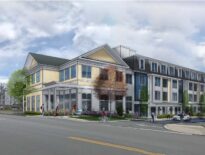
Lew Sichelman
These days, demand for houses is so high that the few places on the market are either way overpriced or in such poor condition that nobody wants them. Otherwise, they’d have sold already.
Only common sense – and perhaps a swift kick in the hind-parts from their realty agents – can persuade sellers to be more realistic about their asking prices. As for the houses in poor condition, Uncle Sam is taking steps to make those fixer-uppers a little more attractive to would-be buyers.
The Federal Housing Administration is poised to update the 203(k) program, which allows borrowers to purchase a house and include the cost of repairs or rehabilitation in a single mortgage. The program, which also allows current owners to refinance their places and roll fix-up costs into one loan, hasn’t been updated in years.
The pending changes, an FHA spokesman told me in an email, “are the single most comprehensive proposed set of updates to the program in at least a decade.”
Jim Bopp, vice president of renovation lending at Planet Home Lending, expects the changes to go a long way toward making heretofore unsellable houses more attractive.
The “long overdue” improvements will open up inventory that people can buy at a discount, Bopp told me, and will “allow houses with ‘good bones’ to be put back into good use.”
How It Works
Under the 203(k) program, a portion of the loan proceeds is used to pay off the seller – or, in the case of a refi, the existing mortgage – and the remainder is placed in escrow. Then, money is released from the account as the work is completed.
The cost of the job must be at least $5,000, and the total loan amount cannot exceed the FHA’s loan limits, which are now $498,257 in most places (or up to $1,149,825 in high-cost markets).
To account for today’s higher repair costs, the FHA plans to increase the limit on allowable rehab costs from $35,000 to $50,000 ($75,000 in high-cost markets). It also plans to extend the allowable rehab period from six months to 10 months, and increase the initial draw to cover 75 percent of the cost of building materials, rather than the current 50 percent.
Another key improvement: The FHA will be allowing the cost of hiring a consultant to watch over the project to be rolled into the mortgage.
These changes aren’t yet the law of the land. As of this writing, the FHA is seeking industry feedback, but it’s hard to see what lenders would find lacking. After all, the proposals reflect input the agency has already received from those same financial institutions.
Indeed, while some lenders believe the planned changes don’t go far enough, most applaud them. Bopp said an updated 203(k) program will offer buyers “a great start on the path to wealth-building.” And Jeff Leinan, co-president of Plaza Home Mortgage, said it will “definitely help” move the logjam of houses at the bottom of the market.
Part of a Broader Effort
The 203(k) improvements are part of the Biden administration’s ongoing efforts to boost the sagging housing market in the face of mortgage rates that are twice as high as they were just a couple of years ago. Those high rates, plus soaring house prices, have led to a startling lack of inventory as homeowners who might otherwise have sold hang on to their relatively low-cost loans.
Most recently, the White House stated its backing for a new federal tax credit to help fund the construction and renovation of houses in distressed urban, suburban and rural neighborhoods. The measure could promote homeownership opportunities for half a million families, said Lael Brainard, director of the National Economic Council.
Introduced in Congress last spring, the tax credit created under the Neighborhood Homes Investment Act would cover the gap between the cost of building or renovating a house and the price at which it can be sold.
The legislation requires that the houses be sold to buyers earning less than 140 percent of the area’s median income. The credits would be awarded to developers, lenders, local governments and other sponsors only after the houses have been completed and sold to owner-occupants – not to investors who plan to rent them.
Meanwhile, a key player in the mortgage market has taken a major step to help condominium buyers and their lenders determine whether the apartments they want to purchase are eligible for favorable financing. With Freddie Mac’s new tool, lenders can confirm in a matter of minutes if condo properties meet certain eligibility standards – if they are “warrantable,” in mortgage parlance. Once that is determined, lenders need only do minimal project underwriting, which “may save lenders time and borrowers money,” the company said.
Freddie’s fellow government-sponsored mortgage-buyer, Fannie Mae, has so far not taken a similar step. Indeed, Fannie has been flagged by some for making it difficult to determine whether a condo property meets its guidelines. Sometimes, condo buyers are ready to close, only to find out at the last minute that Fannie said the projects are unwarrantable.
Freddie Mac’s project assessment program also allows lenders to request certified status for entire projects. And in cases where a project is deemed ineligible, Freddie plans to establish a process for lenders and condo associations to appeal that determination.
Lew Sichelman has been covering real estate for more than 50 years. He is a regular contributor to numerous shelter magazines and housing and housing-finance industry publications. Readers can contact him at lsichelman@aol.com.






